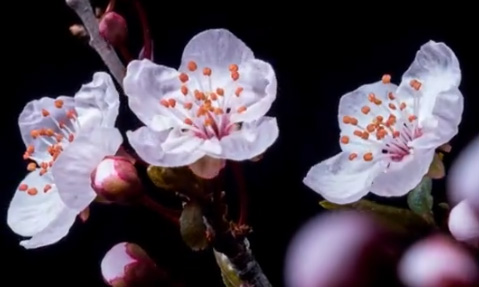Hainan's tropical rainforest park a highlight of national ecological progress

Photo taken in May, 2021 shows a Hainan gibbon and its baby ape in south China's Hainan Province. (Hainan Tropical Rainforest National Park/Handout via Xinhua)
HAIKOU, April 13 (Xinhua) -- With more Hainan gibbon infants spotted and new macrofungi species discovered, the construction of the Hainan Tropical Rainforest National Park has made significant contribution to the local biodiversity.
The national park in south China's tropical island province of Hainan confirmed Tuesday that a gibbon cub was born earlier this year. Last year, two Hainan gibbon cubs were monitored in the park.
The staff members of the park administration spotted the newborn gibbon on Jan. 24 during routine monitoring. After two months of observation, it was confirmed that the gibbon population has increased to 36 in five families on the island.
The national park, covering 4,269 square km, is home to the most concentrated and well-preserved tropical rainforests in China. As one of the country's first group of five national parks officially established last year, the park is the only habitat of Hainan gibbons, a rare primate.

Aerial photo taken on Sept. 4, 2020 shows the view of the Hainan Tropical Rainforest National Park in south China's Hainan Province. (Xinhua/Pu Xiaoxu)
In recent years, Hainan has promoted the construction of the park, strengthening the restoration of tropical rainforest and carrying out ecological relocation projects in core protected areas.
In late March, researchers discovered eight new macrofungi species in the park. These can decompose cellulose and lignin and play a significant decomposition role in the tropical rainforest ecosystem.
Huang Jincheng, director of the Hainan Forestry Department, said efforts will be made to complete the ecological relocation in the park's core areas and close all small hydropower stations inside the park this year.
"Better construction of the park means better protection of Hainan biodiversity and genetic resources," Huang added.
Photos
Related Stories
- Fishermen of south China's Hainan greet late spring season with bountiful catch
- Newborn rare gibbon spotted in Hainan national park
- Hainan's Maona Village promotes rural tourism to increase locals' incomes, expedite rural revitalization
- View of Wuzhishan section of Hainan Tropical Rainforest National Park
- Xi stresses boosting national park development in Hainan
Copyright © 2022 People's Daily Online. All Rights Reserved.










